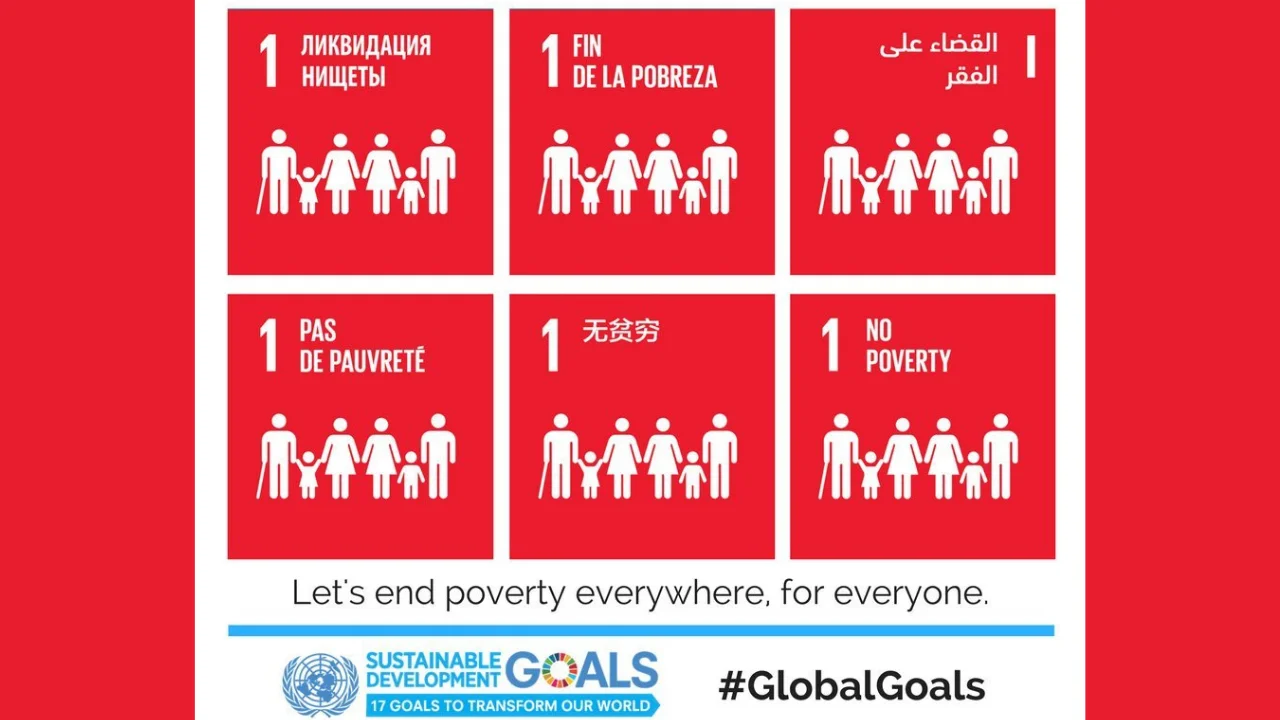International Day for the Eradication of Poverty 2024
The International Day for the Eradication of Poverty is celebrated annually on October 17th to raise awareness about the global poverty crisis and to promote solutions to the problem.
International Day for the Eradication of Poverty Theme 2024
As of today, the theme for the International Day for the Eradication of Poverty 2024 has not been announced yet.
The theme in 2023 was “Decent Work and Social Protection: Putting Dignity in Practice for All”. It underscored the importance of addressing poverty by ensuring access to decent work and social protection.
What is Poverty
Poverty goes beyond mere lack of income and resources for sustaining livelihoods. It encompasses various hardships such as hunger, malnutrition, limited access to education and essential services, social discrimination, exclusion, and the inability to participate in decision-making processes. In 2015, over 736 million people were living below the international poverty line. Approximately 10% of the global population (pre-pandemic) was enduring extreme poverty, facing challenges in meeting fundamental needs like healthcare, education, and access to clean water and sanitation. In this context, 122 women aged 25 to 34 lived in poverty for every 100 men in the same age group, and over 160 million children were at risk of continuing to experience extreme poverty by 2030.
Poverty Facts & Figures
- According to the most recent estimates, in 2015, 10% of the world’s population, or 734 million people lived on less than $1.90 a day.
- Southern Asia and sub-Saharan Africa are expected to see the largest increases in extreme poverty, with an additional 32 million and 26 million people, respectively, living below the international poverty line as a result of the pandemic.
- The share of the world’s workers living in extreme poverty fell by half over the last decade: from 14.3% in 2010 to 7.1% in 2019.
- Even before COVID-19, baseline projections suggested that 6% of the global population would still be living in extreme poverty in 2030, missing the target of ending poverty. The fallout from the pandemic threatens to push over 70 million people into extreme poverty.
- One out of five children live in extreme poverty, and the negative effects of poverty and deprivation in the early years have ramifications that can last a lifetime.
- In 2016, 55% of the world’s population – about 4 billion people – did not benefit from any form of social protection.
Poverty and the Sustainable Development Goals (SDGs)
Ending poverty in all its forms is the foremost objective among the 17 Sustainable Development Goals (SDGs) of the 2030 Agenda for Sustainable Development.
The primary reference to poverty eradication within the SDGs is found in target 1.A, which states, “Ensure significant mobilization of resources from a variety of sources, including through enhanced development cooperation, to provide adequate and predictable means for developing countries, particularly least developed countries, to implement programs and policies to end poverty in all its dimensions.”
Moreover, the SDGs aim to establish effective policy frameworks at national and regional levels, guided by development strategies that prioritize the interests of the economically disadvantaged and take into account gender-specific considerations. These strategies are designed to ensure that by 2030, both men and women have equal rights to economic resources. This includes access to essential services, ownership and control over land and other forms of property, inheritance, natural resources, relevant new technologies, and financial services, including microfinance.
History of International Day for the Eradication of Poverty
- The International Day for the Eradication of Poverty finds its origins in the events of October 17, 1987.
- On that day, more than a hundred thousand people gathered at the Trocadéro in Paris, where the Universal Declaration of Human Rights was signed in 1948, to honor the victims of extreme poverty, violence, and hunger.
- They made a powerful declaration, asserting that poverty is a fundamental violation of human rights and stressing the need to unite and ensure the protection of these rights.
- These sentiments are inscribed on a commemorative stone unveiled during this event.
- Since then, people from diverse backgrounds, beliefs, and social origins have congregated every year on October 17th to reaffirm their commitment and demonstrate their solidarity with those living in poverty.
- Replicas of this commemorative stone have been placed in various locations worldwide, serving as gathering points for the Day’s celebration.
- One such replica can be found in the garden of the United Nations Headquarters and is the site of the annual commemoration organized by the United Nations Secretariat in New York.
Through resolution 47/196 adopted on December 22, 1992, the General Assembly officially designated October 17 as the International Day for the Eradication of Poverty. All member states were invited to dedicate this Day to engage in practical activities related to the eradication of poverty and destitution within their national contexts. The resolution also encouraged intergovernmental and non-governmental organizations to assist countries, at their request, in organizing national events for the observance of the Day. The Secretary-General was tasked with taking necessary measures, within available resources, to ensure the success of the United Nations observance of the Day.
Significance of International Day for the Eradication of Poverty
The International Day for the Eradication of Poverty is significant for several reasons. It is a day to:
- Raise awareness about the global poverty crisis. Poverty is a complex problem that affects millions of people around the world. The International Day for the Eradication of Poverty is an opportunity to learn more about the causes and consequences of poverty, and to challenge the misconceptions that often surround it.
- Promote solutions to the poverty problem. Many things can be done to eradicate poverty, both at the individual and societal levels. The International Day for the Eradication of Poverty is an opportunity to promote these solutions and to call for action to address the root causes of poverty.
- Give voice to the world’s poor. The International Day for the Eradication of Poverty is a platform for the world’s poor to share their stories and to advocate for their rights. It is a day to remember that poverty is not a matter of statistics, but of people who are struggling to survive and thrive.
- Celebrate progress. While there is still much work to be done, the International Day for the Eradication of Poverty is also a day to celebrate the progress that has been made in reducing poverty. It is a day to be inspired by the stories of people who have overcome poverty and to renew our commitment to building a more just and equitable world.
The International Day for the Eradication of Poverty is a reminder that poverty is not inevitable. It is a problem that can be solved if we have the will and the determination to do so. On this day, we reaffirm our commitment to building a world where everyone has the opportunity to live a life of dignity and prosperity.
17th October 2024 Special Day
On October 17, 2024, the International Day for the Eradication of Poverty takes center stage, an annual observance dedicated to raising awareness about the global poverty crisis. This special day serves as a rallying point for promoting solutions and fostering collective efforts to alleviate poverty worldwide. Let’s unite in acknowledging the importance of addressing poverty, advocating for social justice, and working towards a world where everyone has the opportunity to lead a life free from the burdens of extreme poverty.
- Weekly Current Affairs 2025 PDF For Bank, SSC, UPSC Exams
- Unsung Heroes of India: 10 Unknown Freedom Fighters You Should Know
- 26 December Current Affairs 2023 in English
- Daily Current Affairs 2025, Check Today’s Current Affairs
- April Month Current Affairs 2024, Download PDF
- June Month Current Affairs 2024, Download PDF

Hello, I’m Aditi, the creative mind behind the words at Oliveboard. As a content writer specializing in state-level exams, my mission is to unravel the complexities of exam information, ensuring aspiring candidates find clarity and confidence. Having walked the path of an aspirant myself, I bring a unique perspective to my work, crafting accessible content on Exam Notifications, Admit Cards, and Results.
At Oliveboard, I play a crucial role in empowering candidates throughout their exam journey. My dedication lies in making the seemingly daunting process not only understandable but also rewarding. Join me as I break down barriers in exam preparation, providing timely insights and valuable resources. Let’s navigate the path to success together, one well-informed step at a time.






